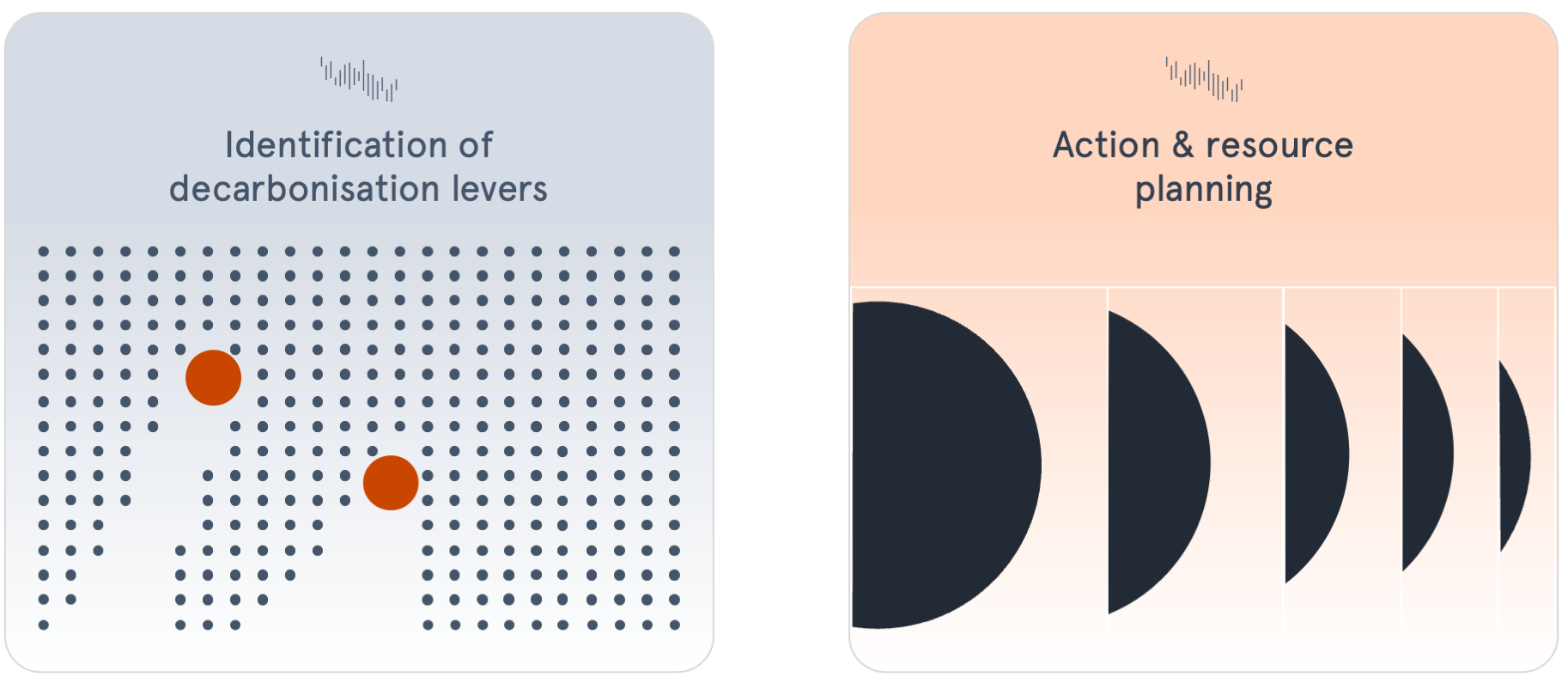A climate transition plan is a roadmap for companies to reduce greenhouse gas emissions, and many companies will have to develop such a plan in the year ahead. In this webinar, we explore what an impactful climate transition plan should include to align with the Corporate Sustainability Reporting Directive (CSRD) and share proven strategies for successful implementation. We were thrilled to have Alexander Bjørn Jensen joining us to offer a tangible example from DSV, a leading logistics and transport company, showcasing their decarbonisation journey.
Why should companies develop and implement a climate transition plan?
- Climate disasters call for urgent action: 2024 was the warmest year on record, with several extreme weather events underscoring the pressing need for climate action. Taking proactive measures to reduce your company’s contribution to global warming and mitigating climate-related risks is not just responsible but essential for future-proofing your organisation.
- Market pressure: Customers and stakeholders are demanding more from businesses when it comes to climate action. Over 10,000 companies have committed to Science-Based Targets (targets for emissions reduction aligned with the Paris Agreement), many with targets for 2030 – and in order to achieve these targets, most will make requirements of companies in their value chain to reduce their emissions.
- Legislative requirements from the EU: Key sustainability frameworks like the Corporate Sustainability Reporting Directive (CSRD) require transparent disclosure of climate transition efforts, while the upcoming Corporate Sustainability Due Diligence Directive (CSDDD) mandates companies to actively implement and monitor these plans.
How to build a climate transition plan
The core of a climate transition plan is understanding your decarbonising levers and identifying specific actions to reduce your emissions. These sub-steps can guide your work in building a climate transition plan:

1. Identify decarbonisation levers
A) Prioritise emissions hotspots based on the results of your GHG inventory across Scope 1, 2 and 3.
B) Understand the mechanisms of GHG accounting. The more you understand about how your activities result in GHG emissions, the easier it is to identify smart initiatives to reduce your emissions.
C) Understand your limitations (and opportunities). Based on your business context (eg. Size, sector, significance to suppliers and customers), different decarbonisation levers will be more or less effective.
2. Action and resource planning
A) The core of a climate transition plan might be built by the sustainability department, but the rest of the organisation will carry out most of the initiatives described in the climate transition plan. Therefore, it is essential that you engage with relevant stakeholders within your organisation to understand the specific actions that can be taken within each decarbonisation lever.
B) Build project plans for the suggested actions to understand their cost-effectiveness better and get them approved. These plans should be short project plans, developed in partnership with the departments who will carry out the initiatives.
C) Calculate the decarbonisation potential of the suggested actions to assess whether the planned actions are sufficient to achieve your climate targets. The calculation will be based on a lot of assumptions, and therefore, it can be beneficial to develop various scenarios for the decarbonisation potential of your initiatives.
D) Understand the investment needs to deliver the actions – both in terms of time and resources – and remember to consider the positive effects such as reduced risk, scoring better on customers’ ESG requirements in tenders, etc.
E) Replicate the process to find more actions to achieve your targets and be prepared to be agile as your data improves.
Implementing the climate transition plan
At the end of the day, a climate transition plan is just a piece of paper until it gets implemented. These steps can help you set a strong foundation for carrying out your climate transition plan:

3 key takeaways from this session
- If you haven’t started a climate transition plan, 2025 is the year to do it.
- Focus on identifying decarbonisation levers, actions and funding for the plan.
- Ensure the plan is effectively implemented and doesn’t just sit on the shelf.
Watch the full recording to learn more about the CSRD requirements for climate transition plans and hear DSV’s Sustainability Manager for Road showcase a best practice example of a decarbonisation roadmap.
If you have further questions about how your organisation can develop and implement an impactful climate transition plan, reach out to our Climate Lead: Ole Høy Jakobsen
Nordic Sustainability has already supported many leading companies with their decarbonisation efforts. We can help you with:
- Creating your first, or improving on your existing, greenhouse gas inventory
- Help you set Science-based targets and get your targets validated
- Developing smart climate transition plans to help you achieve your targets or adapt your existing climate transition plan to make you progress faster
- Getting climate action integrated into the ways of working through engagement with organisation and leadership and the adaptation of policies and procedures

Building a climate transition plan aligned with the CSDDD
The Corporate Sustainability Due Diligence Directive mandates companies to have a climate transition plan in place.



